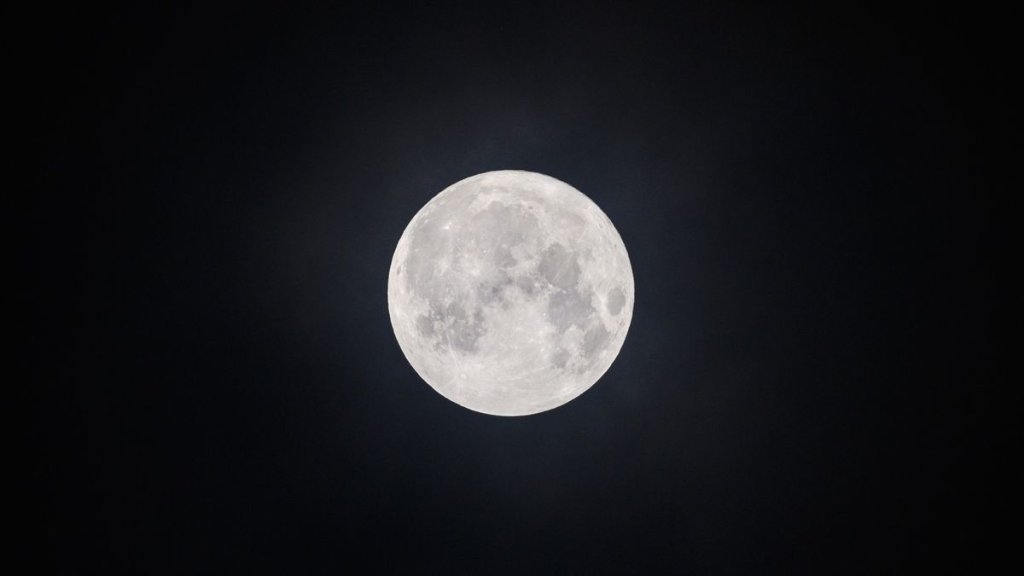The next full moon will rise on Wednesday, Aug. 30, and it will be one of the brightest and largest moons of 2023.
The term “Blue Moon” has nothing to do with color, but since the 1940s has commonly referred to the second of two full moons that fall in a calendar month; thus, Wednesday’s full moon is defined as a Blue Moon because it is the second full moon of August. Just like August’s first full moon, the Sturgeon Moon on Aug. 1, the Blue Moon will also be a supermoon, meaning it will occur during a period when the moon is closer to the Earth, making it appear almost imperceptibly larger in the sky.
Related: August’s rare Super Blue Moon, the biggest full moon of 2023, rises Aug. 30
What time is the Super Blue Moon of 2023?
Want to see the moon up close? We recommend the Celestron Astro Fi 102 as the top pick in our best beginner’s telescope guide.
According to In the Sky, the Super Blue Moon will rise just after sunset at 7:10 p.m. EDT (2310 GMT) on Wednesday from the eastern horizon. This will not be when it is at its biggest and brightest, however. The exact moment of full moon is defined as the point at which it is 180 degrees from the sun, completely opposite our star in the sky over Earth.
For this year’s Blue Moon, the moon will be opposite the sun at 9:36 p.m. EDT on Wednesday, Aug. 30 (0336 on Aug. 31), according to NASA. At this time, it will be in the constellation of Aquarius. The Blue Moon will then set on Thursday just before the sun rises at around 6:46 a.m. EDT (1046 GMT).
What is a Super Blue Moon?
As explained above, a Blue Moon is commonly classified as the second full moon of a single calendar month (although it technically refers to the third full moon in a season that has four full moons). Full moons occur around 12.4 times a year, and that means that every 2.8 years, a 12-month period has 13 full moons. Thus, one of those months will have to accommodate two full moons and, thus, has a Blue Moon.
Because the moon’s cycle takes 29.5 days to go from one full moon to the next, that means this month saw the Full Sturgeon Moon at the start of the month and a second, the Blue Moon, at the end of the month. Not all Blue Moons are supermoons like the full moon of Aug. 30, however.
A supermoon occurs when a full moon falls during a period when the moon is closer to Earth. This happens because the moon’s orbit around our planet isn’t circular, but rather elliptical like a flattened circle or an oval. That means there are times in the moon’s orbit when it is farther away — at apogee — and times when it is closer — at perigee. The distance between Earth and the moon during perigee and apogee ranges from around 220,000 miles (350,000 kilometers) to 253,000 miles (408,000 km), a difference of around 14%.
Despite this disparity in Earth-moon distance, there isn’t a huge difference in how the moon actually looks in the sky during a standard full moon and during a supermoon. The moon may appear slightly larger and brighter during a supermoon, but this will be imperceptible to anyone except those skywatchers who have significant experience observing the moon.
When is the next Super Blue Moon?
Blue moon/supermoon coincidences are a lot rarer than either individual supermoons or Blue Moons. While a super blue moon could happen twice within the same month, they can also be separated by periods as long as 20 years, according to NASA. The space agency says the average time between Super Blue Moons is 10 years.
The next Super Blue Moon after Aug. 30, 2023 will be in January 2037, followed by another one in March 2037, according to NASA.
When is the next supermoon?
While it won’t be a Super Blue Moon, skywatchers will get the opportunity to see another supermoon in 2023. September’s Full Corn Moon on Sept. 29 will be the fourth supermoon in a row and will also be the final supermoon of this year. According to In the Sky, the next supermoon after this will be on Sept. 18, 2024, with that first of two supermoons next year followed a second supermoon a month later on Oct. 17, 2024.
If you are hoping to catch a look at the Super Blue Moon, our guides to the best telescopes and best binoculars are a great place to start.
If you’re looking to snap photos of the Super Blue Moon or the night sky in general, check out our guide on how to photograph the moon as well as our best cameras for astrophotography and best lenses for astrophotography.
Editor’s Note: If you snap an image of the Super Blue Moon and would like to share it with Space.com’s readers, send your photo(s), comments, and your name and location to spacephotos@space.com.

